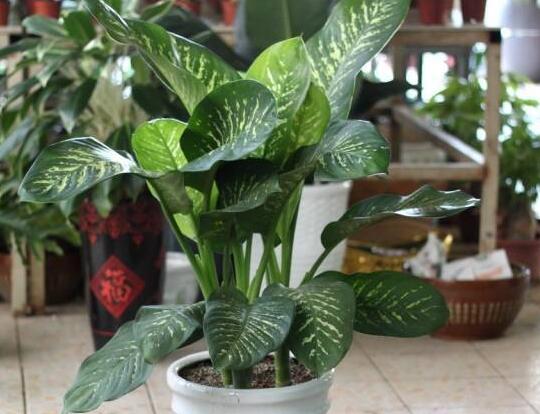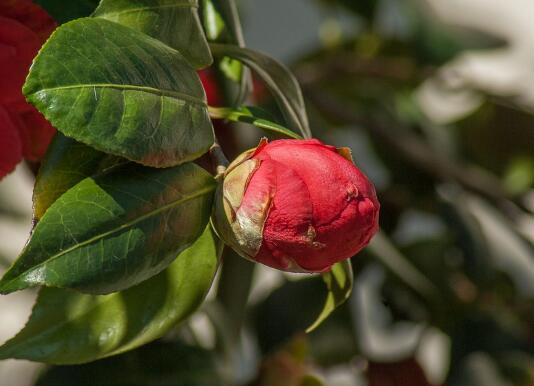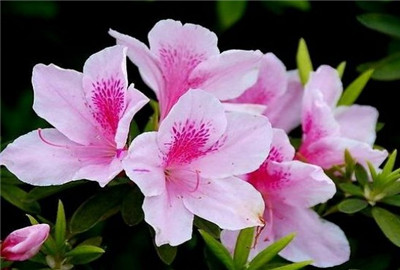How to raise evergreen? Breeding methods and matters needing attention of evergreen
Evergreen is often planted with pine and auspicious grass to express the meaning of auspicious evergreen. The Chinese people are particularly fond of the evergreen who contains the meaning of "good luck". In China's traditional decoration, there is often a pattern composed of evergreen and Ganoderma lucidum grass, which means that everything is smooth and satisfactory, that is, all the best. So how to raise evergreen? What are the breeding techniques and matters needing attention of evergreen?

I. Culture techniques of evergreen
1. Soil selection of evergreen culture
The cultivation substrate of evergreen can be composed of 2 humus soil, 2 forest rotten leaf soil, 2 sandy vegetable garden soil, 2 furnace ballast ash and 2 mature barnyard manure. The above five kinds of matrix, it is best to prepare in advance, in summer with strong sunlight exposure, and finally fine sieve can be put on the pot for standby. During cultivation, a layer of base fertilizer should be placed at the bottom of the basin, such as poultry dry manure that is fermented and ripened and mixed with a small amount of culture soil.
two。 Fertilization method of evergreen culture
The leaves of evergreen are thick and green all the year round, and they need a large amount of fertilizer. in the raw season, organic liquid fertilizers such as rotten rapeseed cakes and meat bones must be applied once every half month. After going out of the room every spring to cultivate normally, the proportion of 1: 1, 1: 6, 1: 1, and 1: 8 can be used, once every 7 / 10 days. 0.5% ammonium sulfate or calcium superphosphate was properly added to topdressing before flower bud differentiation, which was beneficial to bud flowering. Stop fertilizing before flowering, need a lot of nutrients after hanging the fruit, and apply thin fertilizer frequently to make the fruit bright and full.
3. Watering method of evergreen culture
Evergreen herbs, fleshy root flowers. It likes to be moist and afraid of stagnant water in flowerpots, so it should not be watered too much, otherwise it is easy to rot the roots. Spring watering, can be wet with basin soil, generally 2Mel 3-day watering. Summer watering, depending on its growth, can generally be watered once a day in the evening, and sprinkler irrigation is better, so that the soil is more loose and easy for root absorption. Autumn watering, can be watered every 3 days or so, must keep the soil moist, promote the growth and development of the fruit.
No matter where the evergreen is kept, it is best to put a water plate under the flowerpot so that the water is constantly immersed into the soil from the small hole, so that the basin soil is often in a moist state. But watering should be controlled in winter, and the greenhouse can be watered every 10 days. The lower the room temperature, the less watering, otherwise the roots and yellow leaves will rot in winter. At this time, to keep the air moist, often rinse the leaves with warm water (25Mel 30 ℃) to keep the leaves fresh and delicate and emerald green.
4. Temperature requirements for evergreen culture
Evergreen has strong adaptability and is suitable for cultivation in the north and south. The most suitable growth temperature is 20 ℃ and 30 ℃, and it can survive the winter safely if it is more than 7 mol in winter.
5. Lighting requirements of evergreen culture
Evergreen has a strong ability to tolerate shade and likes to grow in moist, semi-shaded or scattered light. If a large area of open field cultivation, summer to build a shed for shade. General families as ornamental cultivation, can be placed under the tall Xiyang woody flowers to avoid strong direct sunlight.
II. Matters needing attention in evergreen culture
(1) evergreen is a kind of flower that likes to be warm and humid, resistant to shade and afraid of cold. Keep it outdoors in summer and need to build a shed for shade. With strong sunlight, the leaves are easy to turn green and white, and the edges of the leaves are also easy to zoom. The optimum temperature for the growth of evergreen is 20 ℃ 30 ℃. In winter, the indoor temperature should be kept between 12 ℃ and 15 ℃, and the lowest temperature should not be lower than 7 Mel. The leaves below 7 Mel should be yellowed and shedding, and the whole plant would die in severe cases.
(2) during the growing season, evergreen would rather be wet than dry, spray water frequently when the temperature is above 25 ℃, control watering after autumn, and dry properly in winter.
(3) evergreen has strong fertilizer tolerance and appropriate amount of fertilizer should be applied. 20% cake fertilizer or 1% compound fertilizer solution should be applied every 15 to 20 days during the growing season, and fertilization should be stopped in winter. It should be shaded at noon in spring, autumn and summer, and put it in a bright place when growing indoors. But keep plenty of light in winter.
6. Breeding methods of evergreen culture
Evergreen can be propagated by ramet and sowing.
(1) ramet propagation: evergreen has luxuriant growth and well-developed root system, which consumes a lot of nutrients every year. Therefore, it is necessary to turn the basin and change the soil year after year, from February to March. The germination of evergreen is strong, and the tiller buds are easy to be produced at the base, and these new tiller buds can be propagated. Ramet can be combined with turning the pot and changing soil at the same time, the clumpy mother plant can be taken out from the flowerpot, shake off the attached soil, cut according to its natural gap, 3 trees in each clump, smear the incision with plant ash after cutting, and then planted in Yixing purple sand basin of suitable size, evergreen has strong regeneration ability, grows fast after ramet, and can be divided again after 4 years.
(2) sowing and reproduction: the seeds of evergreen generally mature in December. Families in the Yangtze River basin and its northern areas do not have heating equipment and cannot be sown with picking. The seeds can be stored and sown in March-April of the following year when the average temperature is about 22 ℃. According to the number of seeds, the nursery bed can be replaced by earthen pottery flowerpots, and the matrix is fully mixed with forest rotten leaf soil and fine river sand, and disinfected with high temperature. When sowing, scrape and compact the substrate, then sow the seeds evenly in the seedbed, soak the pot and pour the water thoroughly. The edge of the basin is covered with glass, and then the seedbed is placed in a warm and ventilated place.
The management work after sowing is mainly to keep the substrate moist, and the seeds begin to germinate after about 15May. at this time, the glass should be removed, the ventilation should be strengthened, the living balcony should be green and the sun should be exposed to weak sunlight. When the seedlings grow to 5cm, they can be cultivated in different pots according to 4 plants per pot. In autumn, the cultivation soil and base fertilizer are planted in Yixing purple sand basin, and the new evergreen should be carefully maintained. Generally, after more than two years of cultivation and management, they can blossom and sit fruit and be placed indoors to watch.
7. Pruning of evergreen culture promotes fruit setting
Although evergreen is a herb, it should be trimmed and styled in time, around the Beginning of Summer. When pruning, put the end of the potted flowers on the workbench and take a look back and forth. For those aging, insect-damaged and cracked leaves, they should be firmly cut off. Because these leaves are not beautiful, nor can they be exposed to light to produce nutrients. As the saying goes, "cut your hair on April 8, evergreen" means that evergreen should cut off its aged leaves in spring to concentrate nutrients and promote plant germination and flower bud differentiation. Seedling pruning is an important work in cultivation management, otherwise the plant does not grow well and it is difficult to blossom.
Most of the evergreen cultivated in the open field can blossom and hang fruit. And potted plant is placed on balcony and windowsill to raise, hang fruit is not much, what reason is this? This is due to the fact that the potted plant has no chance to transmit pollen. Evergreen in the flowering period, can not be caught in the rain, should be placed in the shade, the soil must not be wet and dry, the ventilation condition should be good, the air should be fresh and moist, to create good ecological conditions for plant pollination.
Time: 2019-04-13 Click:
- Prev

How to grow camellias? Culture methods and matters needing attention of Camellia
Camellia, also known as camellia, is one of the top ten traditional famous flowers in China. The leaves are green and glossy, evergreen all the year round, the flowers are large and colorful, the flower patterns are rich, and the florescence is long. It is an excellent garden beautification and interior decoration flower. So, what are the cultivation methods of camellias? What do we need to pay special attention to in the process of breeding?
- Next

Is it easy to raise azaleas? Is there anything to pay attention to?
Rhododendron, alias: rhododendron, pomegranate, Yingshanhong. It is said that rhododendron is dyed by a kind of bird spitting blood. It has a wide variety of flowers, gorgeous flowers and leaves, and is suitable for both ground and potted plants. It is one of the top ten traditional flowers in China. But are azaleas really easy to breed? What should be paid attention to in the process of breeding?
Related
- Fuxing push coffee new agricultural production and marketing class: lack of small-scale processing plants
- Jujube rice field leisure farm deep ploughing Yilan for five years to create a space for organic food and play
- Nongyu Farm-A trial of organic papaya for brave women with advanced technology
- Four points for attention in the prevention and control of diseases and insect pests of edible fungi
- How to add nutrient solution to Edible Fungi
- Is there any good way to control edible fungus mites?
- Open Inoculation Technology of Edible Fungi
- Is there any clever way to use fertilizer for edible fungus in winter?
- What agents are used to kill the pathogens of edible fungi in the mushroom shed?
- Rapid drying of Edible Fungi

